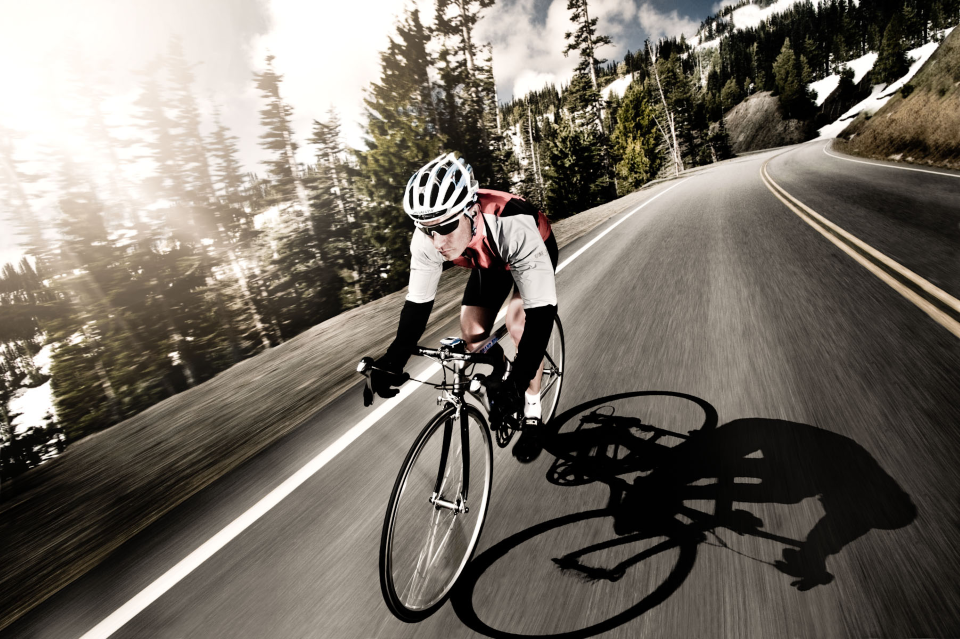Top 5 Workouts for the Time Crunched Cyclist
Most people are trying to get 1,000 things done each day. If you’re a cyclist, one of those things is usually to try and ride your bike. Although, it’s not always as easy as it sounds.
Between work, family and other extra curricular activities, finding the time can be difficult. Even more difficult for many athletes is knowing what types of rides to do to maximize their available time. By knowing what specific areas to focus on you’re more likely to get the most out of your miles. Try integrating these workouts into your routine if you’re one of the many that don’t have enough time in your day.
Sweet Spot Workouts
The “sweet spot” is the zone just below your threshold that enables you to reap big gains without the added stress of higher intensity interval work. Whether you’re training with heart rate or power you can calculate your sweet spot by figuring 85%-95% of your established heart rate or power threshold. When you train in this range you push your body’s aerobic system, which in turn delivers fitness gains in the form of increased thresholds and stamina. In practice these intervals can be either integrated into longer endurance rides, or performed as a standalone workout. Depending on what you’re training for, and where your weaknesses are, sweet spot intervals can last anywhere from 10 minutes to 1 hour. I like to match the length of the interval with the demands of the races my athletes are training for. For example, if it’s a time trial I may prescribe longer, more sustained intervals. However, if the racecourse is shorter and more intense, then the intervals won’t be as long, but will be more numerous. One example of this type of workout would be 3x10 minutes @ 90% with 5 minute in Zone 2 between each interval.
Hill Work
Most rides, races, and events have some amount of climbing, and the best way to get better at climbing is to perform dedicated hill work. There’s two main ways to approach hill training. One way, much like sweet spot intervals, is to work climbing into your endurance rides. When you’re working hills into your long rides it’s best to single out a few specific climbs and treat them like intervals. Set zone requirements for each climb, and treat each one as a dedicated part of your workout. Hill repeats are also effective and can double as anaerobic intervals. They’re a great way to mix up your training, and can be a welcomed break from traditional sprints or trainer workouts. A good rule of thumb is to keep the sustained climbs lasting 10 minutes or more between 80%-90% of your threshold. Shorter climbs lasting less than 10 minutes can be done close to, or above your established threshold. If you have a race planned that includes a lot of climbing, or you’re in an area with mountainous terrain, integrate this type of dedicated hill training into your schedule 1-2 times per week.
Anaerobic Intervals
Think of these intervals as anything above %100. Technically anaerobic refers to the moment in which your muscles can no longer rid themselves of lactic acid. When this happens your muscles begin to fatigue at an unsustainable rate, and eventually you’re forced to stop. You can train your body to be more efficient at this process by spending a small amount of time performing top end intervals. Typically lasting less than 5 minutes these workouts should be integrated into your training 1-2 x per week once you’ve achieved a solid aerobic foundation and are preparing for a specific event. There’s any number of ways to structure these workouts, but the key is to perform intervals at an intensity that will increase your performance and prepare you for the specifics of any events you’re training for. A good goal is to try extending both the duration and intensity of the intervals as the season progresses.
Strength Workouts
One of the most important things to remember as an endurance athlete is that the goal of strength exercises is to make you a better rider. The primary objective is to perform exercises that add to your ability as a cyclist, and not to add bulk or mass. Focus on dynamic movements that increase your range or motion, improve your form, and help decrease your risk of injury. One of the best approaches for athletes is to perform exercises that hit “primemovers”. These are your major muscles like hips, quads, back, chest and core. Think about how you ride your bike, and the muscles that aid in your ability to both turn over the pedals and keep your bike upright. If you’re crunched for time turning your strength workouts into high intensity sessions can be a great way to get in both strength and cardio in a short amount of time.
While there’s many ways to build a successful strength program, you can find some basic strength exersizes HERE.
Endurance Rides
Often times the thinking is that if you don’t have a lot of time you can get more out of each workout by going faster. Not true. This is a dangerous approach and often times can lead to overtraining, injury, and burn out. In all reality if you want to get faster and fitter you need to spend upwards of 80% of your total training volume below 75% of your threshold. These endurance rides are vital for training your body’s metabolism to be more efficient, and providing the appropriate amount of time for recovery. While it may seem counter intuitive, allowing time for long aerobic efforts will make you faster and healthier long term. For most cyclists this takes the form of the classic “long ride”. Usually lasting 2-5 hours, the majority of this ride should be at a conversational pace. These sessions can be the hardest to squeeze in because they usually take up the most amount of time. Shoot for 1 long endurance ride each week, and add 1-2 more as time and race preparedness allows.
If you struggle with finding the time to train, you’re not alone. Most athletes have to work training into the rest of their life, and it can be a real challenge. However, if you know what workouts will produce the best results, with the time you have available, that will help you manage your time more wisely. Focus on workouts that will train your body’s systems to be as efficient and fit as possible, allowing you to tackle everything from your next town line sprint to the regional championship knowing you’re prepared and ready to go.











